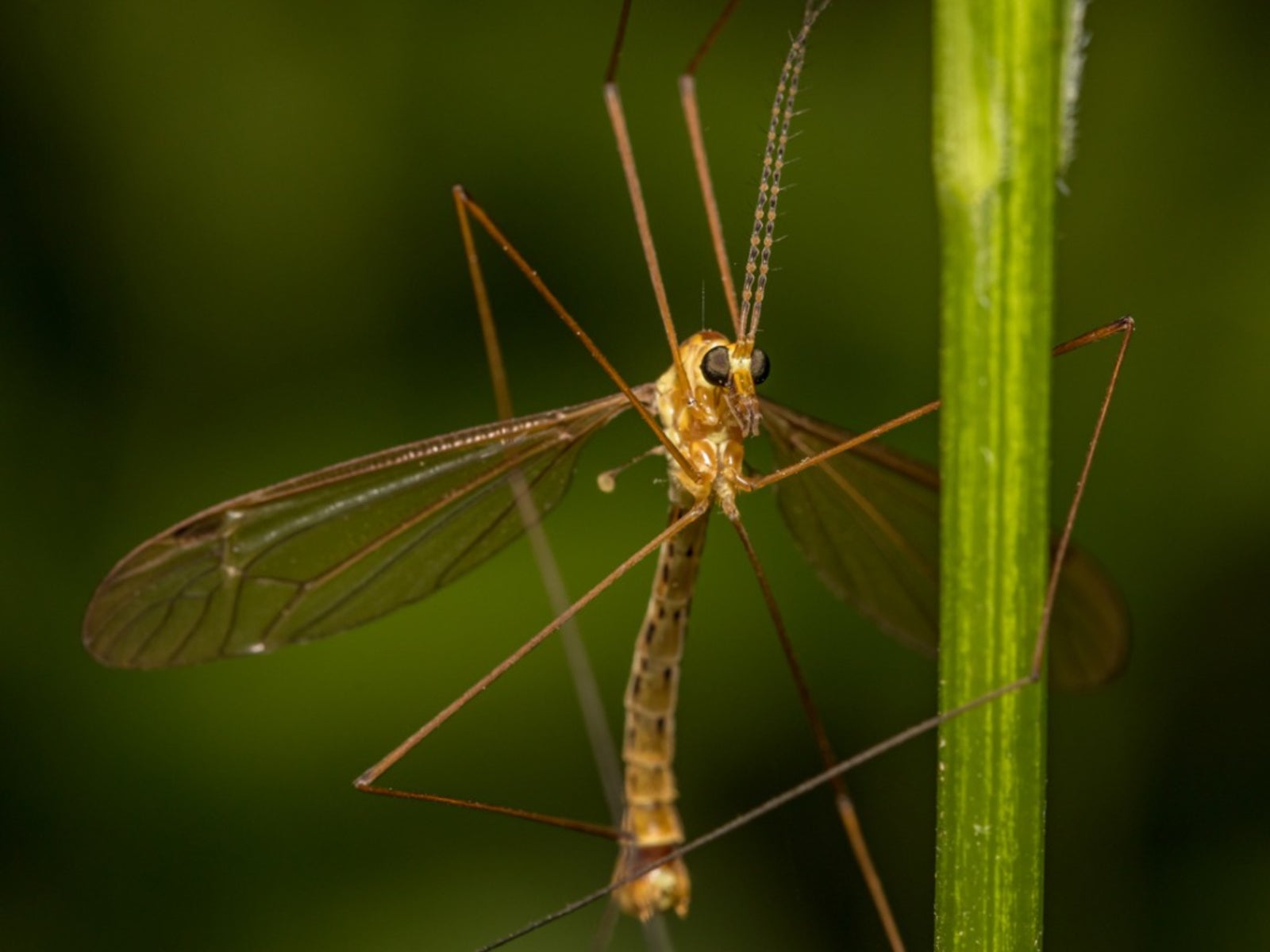What Are Crane Flies: Information On Crane Flies And Lawn Damage


If you spy what looks like a giant mosquito hanging around your garden or zipping about near the back porch light, don't panic-- it's only a crane fly. Throughout the summer, adult crane flies emerge from pupation below ground to mate and lay their eggs. Though many are beneficial decomposers, crane flies and lawn damage also go hand in hand.
What are Crane Flies?
Crane flies belong to the order Diptera and are distant relatives to flies and mosquitoes. Regardless of their less than desirable relatives, adult crane flies don't bite or spread diseases, although crane flies in lawn grass can be problematic. These leggy, flying insects lay their eggs on the lawn; the emerging larva is the stage to fear. Crane fly larvae are long, white, worm-like insects measuring up to 1 ½ inches (3 cm.) long. They feed on the roots below turf grass lawns, killing crowns and causing brown patches that mar otherwise perfect seas of green grass. Crane fly larvae may also emerge to feed on crowns and grass blades on warm nights, further damaging lawns. Most turf species can tolerate low to medium sized populations of crane fly larvae, but high feeding pressure can spell disaster.
How to Get Rid of Crane Flies
Adult crane flies don't live long and aren't dangerous, so crane fly control efforts are targeted primarily at larvae. By reducing habitat, increasing the vigor of turfgrass, and using beneficial nematodes, you can significantly reduce crane fly populations effectively and without applying dangerous chemicals to the lawn. Dethatching and lawn aeration are vital in the battle against crane flies; implement a lawn care regiment that includes both of these chores at least once a year, more often if your thatch is very thick. Once those chores are completed, reduce the water you apply to your lawn. Crane flies need a moist environment to survive, but most grasses will do just fine with moderately dry soil as long as they receive a good drenching when they are watered. The beneficial nematode Steinernema feltiae can reduce crane fly larvae by up to 50 percent when used correctly, but nothing reduces crane fly damage like a well-managed lawn. A springtime application of nitrogen is recommended for lush, healthy grass that's better able to resist crane fly larvae feeding.
Sign up for the Gardening Know How newsletter today and receive a free copy of our e-book "How to Grow Delicious Tomatoes".

Kristi Waterworth was a regular contributor to Gardening Know How for many years, answering countless queries on plant pests and diseases.